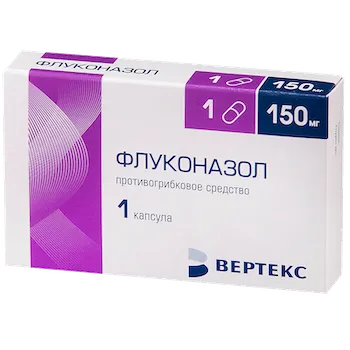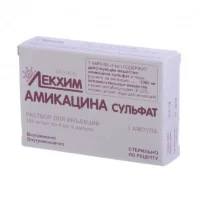Description
Fluconazol (Fluconazole) Coated Tablets 150 mg. №1
Ingredients:
Each tablet contains 150 mg of fluconazole.
Dosage:
The usual dose is one tablet once daily. Consult a healthcare professional for personalized dosing instructions.
Indications:
Fluconazol tablets are indicated for the treatment of fungal infections. It is commonly used for yeast infections, including vaginal yeast infections.
Contraindications:
Do not use Fluconazol tablets if you are allergic to fluconazole or similar antifungal medications. Consult your doctor before use if you have liver or kidney disease.
Directions:
Swallow the tablet whole with a glass of water. It can be taken with or without food. Follow the instructions provided by your healthcare provider.
Scientific Evidence:
Fluconazole, the active ingredient in Fluconazol tablets, is a potent antifungal agent that works by inhibiting the synthesis of ergosterol, a key component of fungal cell membranes. This disruption leads to the death of the fungal cells, effectively treating the infection. Several studies have demonstrated the efficacy of fluconazole in treating various fungal infections, with high cure rates and minimal side effects.
Additional Information:
Fluconazol tablets are well-tolerated by most patients, with common side effects including nausea, headache, and abdominal pain. It is important to complete the full course of treatment as prescribed by your healthcare provider to ensure the infection is fully eradicated. If you experience severe side effects or allergic reactions, seek medical attention immediately.
Pharmacological Effects:
Fluconazole exerts its antifungal effects by selectively inhibiting the fungal enzyme lanosterol 14-alpha-demethylase, which is essential for the synthesis of ergosterol. This disruption in ergosterol production compromises the integrity of the fungal cell membrane, leading to cell death. The specificity of fluconazole for fungal cells over mammalian cells contributes to its efficacy and safety profile.
Clinical Trials and Comparative Effectiveness:
Clinical trials have shown fluconazole to be highly effective in the treatment of various fungal infections, including candidiasis and cryptococcosis. Comparative studies have demonstrated fluconazole’s comparable efficacy to other antifungal agents with the added benefit of convenient once-daily dosing. Its broad spectrum of activity against a wide range of fungal species makes it a valuable treatment option in clinical practice.
References:
- Pappas PG, Kauffman CA, Andes DR, et al. Clinical Practice Guideline for the Management of Candidiasis: 2016 Update by the Infectious Diseases Society of America. Clin Infect Dis. 2016;62(4):e1-e50.
- Rex JH, Bennett JE, Sugar AM, et al. A randomized trial comparing fluconazole with amphotericin B for the treatment of candidemia in patients without neutropenia. N Engl J Med. 1994;331(20):1325-1330.





